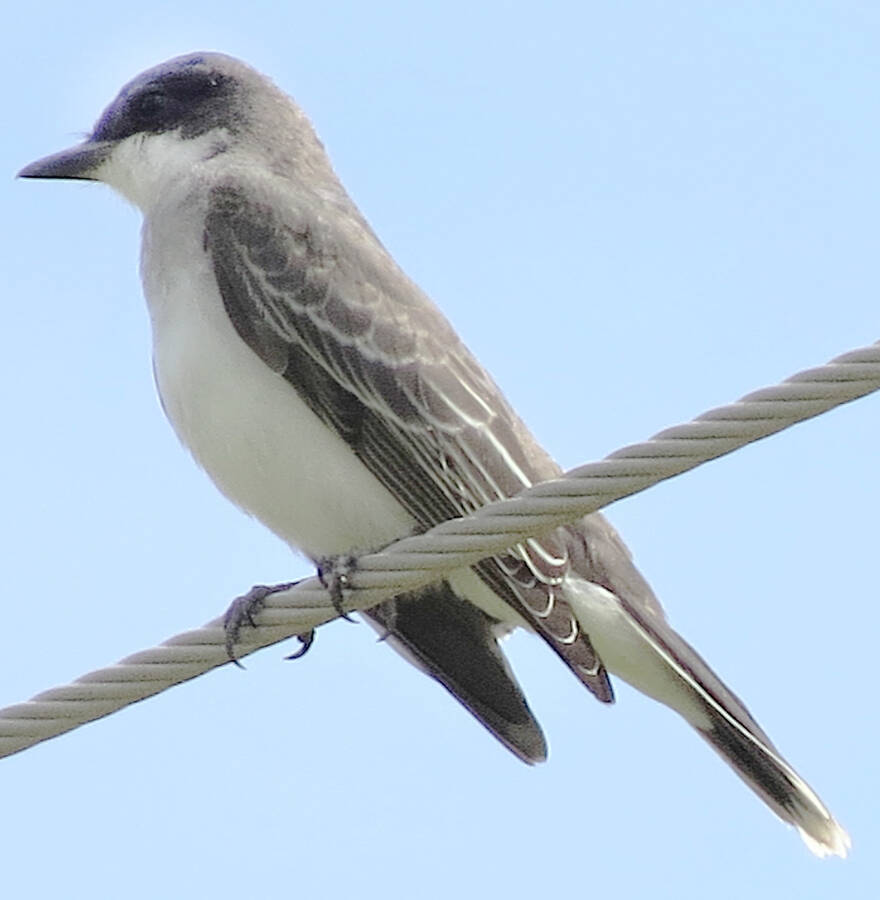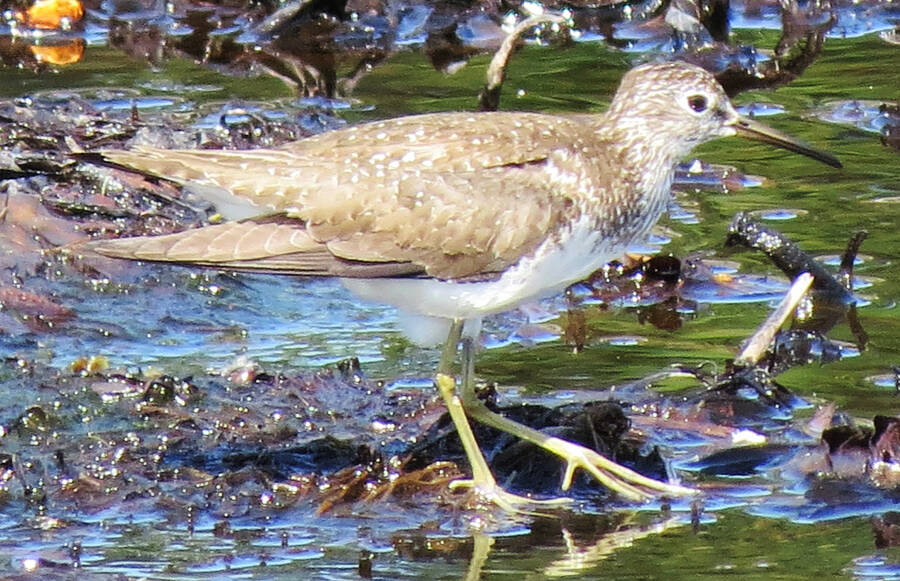
2023-08-16
Only one warbler, but lots of shorebirds to be seen on recent trip
I did quite a bit of birding since last week’s column, but was able to find only one warbler.
That was a black-throated green warbler that I heard call from my yard in LaHave. Lots of shorebirds are now moving through however.
On Aug. 5 at Crescent Beach I counted 304 semi-palmated plovers, 170 short-billed dowitchers, 21 black-bellied plovers, 43 least sandpipers, one greater yellowlegs, 13 red knots, two semi-palmated sandpipers, one sanderling and 11 willets. On Aug. 6 there were one greater yellowlegs, 471 semi-palmated plovers, 17 black-bellied plovers, three lesser yellowlegs, 103 short-billed dowitchers, two least sandpipers, and 15 willets.
Jason Dain visited Cherry Hill Beach on Aug. 7 and saw about 1,000 shorebirds, including a red knot. Jason also saw an adult piping plover with two, 12-day-old young. This was the second nesting for this particular adult male this year, which is rare. We know this because the adult is banded. I was thrilled to see my first solitary sandpiper for the year at Broad Cove on August 7.
The solitary sandpiper nests throughout the Canadian spruce forest. They nest from Alaska, the Mackenzie, Manitoba, Ontario, Quebec, Labrador and in British Columbia, Alberta and Saskatchewan. They also nest in the northern United States. They winter in California, the Gulf coast, Georgia, Florida and the West Indies and Argentina.
The solitary sandpiper is 18.75 to 22.5 cm with a wingspread of 37.5 to 42.5 cm. The sexes are outwardly alike. They are a dark-backed sandpiper, white below and somewhat larger than the similar spotted sandpiper. The upperparts are darker than the spotted sandpiper and spangled with white, including the wings, which have no white stripe as in the spotted sandpiper. There is a white eye-ring.
In feeding the solitary sandpiper walks about small stagnant pools fringed with weeds and grass and along miry tidewater ditches in marshes. They can also be found in pools in meadows and savannas snatching up dragonfly nymps, water scavenger beetles, water boatmen, grasshoppers, caterpillars and also spiders, worms, small crustaceans and small frogs.
They probe the mud with the bill while walking through water. They shake or tremble the forward foot to stir up aquatic insects from the bottom.
In nesting they are found in the Muskeg country of the North readily in trees. The female lays her eggs in nests using old nests of rusty blackbirds, American robins, common grackles, cedar waxwings, Bohemian waxwings, eastern kingbirds and Canada jays. These nests are 1.5 m to three metres above ground. Sometimes the adults will add their own nesting materials. They also adopt freshly built nests of other species.
On Aug. 4, David Walmark reported six cedar waxwings feeding at his honeysuckle bush in Kingsburg. Steven Hiltz had an immature female wood duck at Back Centre on Wentzell’s Lake Aug. 6.
On Aug. 7, I saw my first ring-necked pheasant for the year at Grand Pré, which is surprising as I used to see this species everywhere. Three eastern kingbirds at Grand Pré were also a first for the year for me.
Brad Armstrong told me that on a visit to his cottage in Tatamagouche he observed about 150 bank swallows. These were in addition to the resident 50 that had been there all summer. The additional 150 were there one day and gone the next off on that long journey in migration. The resident 50 or so remained behind and had not left yet at the time of writing. Red-winged blackbird numbers at the feeders increased to about 20 with a mixture of males, females and immatures.
Birds of interest elsewhere were a common gallinule at Chebogue Point Road in Yarmouth County reported by Mark Dennis Aug. 4. The next day, Mark Dennis saw a stilt sandpiper in Clarks Harbour and an adult yellow-crowned night heron at Daniels Head both locations on Cape Sable Island.
On Aug. 6 produced a juvenile yellow-crowned night heron at the Thomas Raddall Park in Queens County for Phil Taylor. Tony Millard had a yellow-crowned night heron at the guzzle on Cape Sable Island also on that day. Two juveniles were also reported at this location.
On Aug. 7, Kyle Shay discovered a great egret at the Brookfield Marsh. On the same day Mark Dennis saw a Hudsonian godwit at the Hawk Flats on Cape Sable Island. Mark Dennis located a green heron at Clam Point on Cape Sable Island on Aug. 8.
You may reach me at (902) 693-2174 or email jrhbirder@hotmail.com







